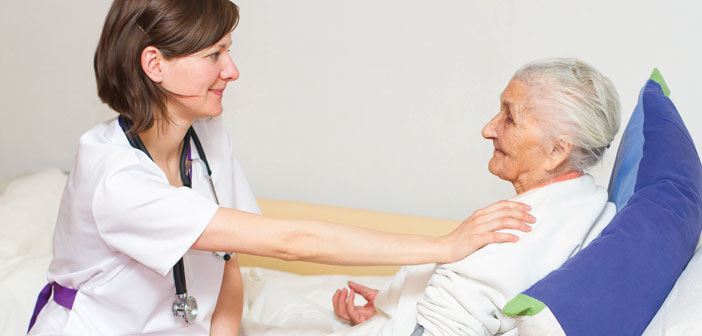With medical expenses soaring, especially those associated with hospitalization, it is essential to utilize all available resources in an effort to reduce or minimize additional re-hospitalization costs. Home health care services provide a transition for the patient from the hospital to the home setting by closing the gaps in patient care between hospital discharge and outpatient professional care services with their primary care physician.
Prior to patient discharge from the hospital, it is essential that a Transitional Care Management Team be developed. A Hospitalist and Transitional Management Care Physician expedite this process through coordination with a Home Care Agency.
The plan of care is developed and implemented to provide the highest quality of home health and personal care available.
Within 24 to 48 hours after discharge from the hospital, a home care nurse visits the patient at their residence to conduct an initial medical needs assessment and home safety evaluation. The Registered Nurse will reconcile medications in the home to those listed on the hospital discharge documents. This reconciliation is necessary to eliminate medication errors that occur from inaccurate information provided to the hospital upon admission, duplicate medication therapy, and a patient’s inability to purchase medication. The reconciliation process is a key step to ensure medications are indeed taken as intended by the patient’s primary care physician.
Once the initial medication reconciliation, medical needs assessment, and home safety evaluation are complete, a collaborated plan of care is developed between the Transitional Management Care Physician and the Registered Nurse to provide appropriate services to the patient, dependent upon their medical and physical support needs.
The primary goal of the plan of care is to establish focused disease process education for the patient and provide the tools necessary to manage the disease process by identifying early symptoms for prevention of disease exacerbation. Some examples of patient specific focused disease process education include Congestive Heart Failure (CHF), Chronic Obstructive Pulmonary Disease (COPD), Cerebrovascular Accident (CVA) or stroke, diabetes, and cancer.
Additionally, the plan of care will include initiation of skilled nursing services when necessary. Performed by the Registered Nurse, skilled nursing services may include wound management based on comprehensive wound care protocols and guidelines, intravenous infusion, tracheostomy and ventilation support, enteral nutritional support via feeding tube, and urinary catheter care. Pain management is also addressed as a vital aspect of the plan of care and incorporates the combined efforts of the Registered Nurse, Physical Therapist, and Occupational Therapist.
Finally, an integral part of the plan of care is addressing potential safety risks identified during the home safety evaluation. The home safety evaluation identifies: fall risk, suitability of living environment, adaptive equipment needs, and personal care needs. Based on the safety evaluation findings, an interdisciplinary team is developed to determine and establish immediate and ongoing therapy needs. These therapy needs may include fall-prevention programs, home exercise programs, home modification recommendations, and assistance with daily living activities.
The plan of care is developed and implemented to provide the highest quality home health and personal care available. Patient care provided by the Transitional Care Management Team will enable patients to live with as much independence and dignity as their condition permits, providing peace of mind to the patients and their families.
The Home Care Agency works closely with the Transitional Care Management Physician to provide immediate, around-the-clock care to patients in an effort to prevent re-hospitalization of the patient, thereby reducing medical expenses.














